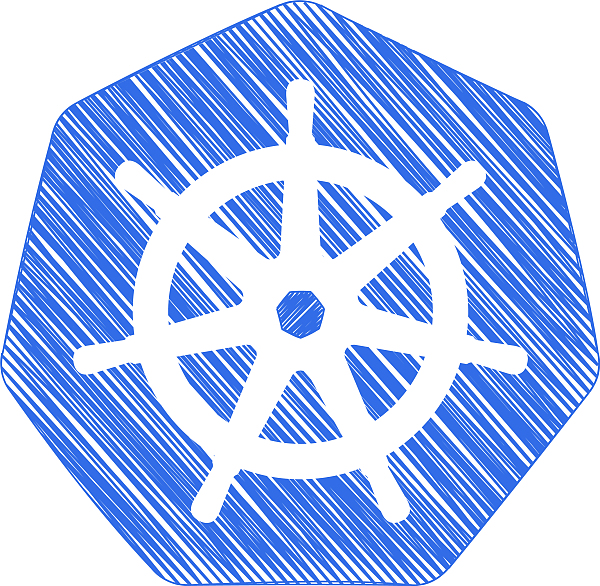k8s kubectl run命令使用详解
k8s kubectl run命令使用详解在集群上运行指定镜像。摘要创建并运行一个指定的可复制的镜像。 创建一个deployment或者job来管理创建的容器。kubectl run NAME --image=image [--env="key=value"] [--port=port] [--replicas=replicas] [--dry-run=bool] [--overrides=inl
·
k8s kubectl run命令使用详解
在集群上运行指定镜像。
摘要
创建并运行一个指定的可复制的镜像。 创建一个deployment或者job来管理创建的容器。
kubectl run NAME --image=image [--env="key=value"] [--port=port] [--replicas=replicas] [--dry-run=bool] [--overrides=inline-json] [--command] -- [COMMAND] [args...]
示例
# 启动一个 Nginx 实例。
kubectl run nginx --image=nginx
# 启动一个 hazelcast 单个实例,并开放容器的5701端口。
kubectl run hazelcast --image=hazelcast --port=5701
# 运行一个 hazelcast 单个实例,并设置容器的环境变量"DNS_DOMAIN=cluster" and "POD_NAMESPACE=default"。
kubectl run hazelcast --image=hazelcast --env="DNS_DOMAIN=cluster" --env="POD_NAMESPACE=default"
# 启动一个 replicated 实例去复制 nginx。
kubectl run nginx --image=nginx --replicas=5
# 试运行。不创建他们的情况下,打印出所有相关的 API 对象。
kubectl run nginx --image=nginx --dry-run
# 用可解析的 JSON 来覆盖加载 `deployment` 的 `spec`,来运行一个 nginx 单个实例。
kubectl run nginx --image=nginx --overrides='{ "apiVersion": "v1", "spec": { ... } }'
# 运行一个在前台运行的 busybox 单个实例,如果退出不会重启。
kubectl run -i --tty busybox --image=busybox --restart=Never
# 使用默认命令来启动 nginx 容器,并且传递自定义参数(arg1 .. argN)给 nginx。
kubectl run nginx --image=nginx -- <arg1> <arg2> ... <argN>
# 使用不同命令或者自定义参数来启动 nginx 容器。
kubectl run nginx --image=nginx --command -- <cmd> <arg1> ... <argN>
# 启动 perl 容器来计算 bpi(2000) 并打印出结果。
kubectl run pi --image=perl --restart=OnFailure -- perl -Mbignum=bpi -wle 'print bpi(2000)'
选项
--attach[=false]: 如果为true, 那么等 pod 开始运行之后,链接到这个 pod 和运行 'kubectl attach ...'一样。默认是 false,除非设置了 '-i/--interactive' 默认才会是 true。
--command[=false]: 如果为 true 并且有其他参数,那么在容器中运行这个'command',而不是默认的'args'。
--dry-run[=false]: 如果为 true,则仅仅打印这个对象,而不会执行命令。
--env=[]: 设置容器的环境变量。
--expose[=false]: 如果为 true, 会为这个运行的容器创建一个公开的 service。
--generator="": The name of the API generator to use. Default is 'deployment/v1beta1' if --restart=Always, otherwise the default is 'job/v1'. This will happen only for cluster version at least 1.2, for olders we will fallback to 'run/v1' for --restart=Always, 'run-pod/v1' for others.
--hostport=-1: The host port mapping for the container port. To demonstrate a single-machine container.
--image="": 用来运行的容器镜像。
--include-extended-apis[=true]: If true, include definitions of new APIs via calls to the API server. [default true]
-l, --labels="": pod 的标签。
--leave-stdin-open[=false]: If the pod is started in interactive mode or with stdin, leave stdin open after the first attach completes. By default, stdin will be closed after the first attach completes.
--limits="": The resource requirement limits for this container. For example, 'cpu=200m,memory=512Mi'
--no-headers[=false]: 当使用默认输出格式时不打印标题栏。
-o, --output="": Output format. One of: json|yaml|wide|name|go-template=...|go-template-file=...|jsonpath=...|jsonpath-file=... See golang template [http://golang.org/pkg/text/template/#pkg-overview] and jsonpath template [http://releases.k8s.io/release-1.2/docs/user-guide/jsonpath.md].
--output-version="": Output the formatted object with the given group version (for ex: 'extensions/v1beta1').
--overrides="": An inline JSON override for the generated object. If this is non-empty, it is used to override the generated object. Requires that the object supply a valid apiVersion field.
--port=-1: The port that this container exposes. If --expose is true, this is also the port used by the service that is created.
--record[=false]: Record current kubectl command in the resource annotation.
-r, --replicas=1: Number of replicas to create for this container. Default is 1.
--requests="": The resource requirement requests for this container. For example, 'cpu=100m,memory=256Mi'. Note that server side components may assign requests depending on the server configuration, such as limit ranges.
--restart="Always": The restart policy for this Pod. Legal values [Always, OnFailure, Never]. If set to 'Always' a deployment is created for this pod, if set to 'OnFailure', a job is created for this pod, if set to 'Never', a regular pod is created. For the latter two --replicas must be 1. Default 'Always'
--rm[=false]: If true, delete resources created in this command for attached containers.
--save-config[=false]: If true, the configuration of current object will be saved in its annotation. This is useful when you want to perform kubectl apply on this object in the future.
--service-generator="service/v2": The name of the generator to use for creating a service. Only used if --expose is true
--service-overrides="": An inline JSON override for the generated service object. If this is non-empty, it is used to override the generated object. Requires that the object supply a valid apiVersion field. Only used if --expose is true.
-a, --show-all[=false]: When printing, show all resources (default hide terminated pods.)
--show-labels[=false]: When printing, show all labels as the last column (default hide labels column)
--sort-by="": If non-empty, sort list types using this field specification. The field specification is expressed as a JSONPath expression (e.g. '{.metadata.name}'). The field in the API resource specified by this JSONPath expression must be an integer or a string.
-i, --stdin[=false]: Keep stdin open on the container(s) in the pod, even if nothing is attached.
--template="": Template string or path to template file to use when -o=go-template, -o=go-template-file. The template format is golang templates [http://golang.org/pkg/text/template/#pkg-overview].
-t, --tty[=false]: Allocated a TTY for each container in the pod.
继承自父命令的选项
--alsologtostderr[=false]: 同时输出日志到标准错误控制台和文件。
--certificate-authority="": 用以进行认证授权的.cert文件路径。
--client-certificate="": TLS使用的客户端证书路径。
--client-key="": TLS使用的客户端密钥路径。
--cluster="": 指定使用的kubeconfig配置文件中的集群名。
--context="": 指定使用的kubeconfig配置文件中的环境名。
--insecure-skip-tls-verify[=false]: 如果为true,将不会检查服务器凭证的有效性,这会导致你的HTTPS链接变得不安全。
--kubeconfig="": 命令行请求使用的配置文件路径。
--log-backtrace-at=:0: 当日志长度超过定义的行数时,忽略堆栈信息。
--log-dir="": 如果不为空,将日志文件写入此目录。
--log-flush-frequency=5s: 刷新日志的最大时间间隔。
--logtostderr[=true]: 输出日志到标准错误控制台,不输出到文件。
--match-server-version[=false]: 要求服务端和客户端版本匹配。
--namespace="": 如果不为空,命令将使用此namespace。
--password="": API Server进行简单认证使用的密码。
-s, --server="": Kubernetes API Server的地址和端口号。
--stderrthreshold=2: 高于此级别的日志将被输出到错误控制台。
--token="": 认证到API Server使用的令牌。
--user="": 指定使用的kubeconfig配置文件中的用户名。
--username="": API Server进行简单认证使用的用户名。
--v=0: 指定输出日志的级别。
--vmodule=: 指定输出日志的模块,格式如下:pattern=N,使用逗号分隔。
参考链接
- http://kubernetes.kansea.com/docs/user-guide/kubectl/kubectl_run/
- http://docs.kubernetes.org.cn/468.html
更多推荐
 已为社区贡献20条内容
已为社区贡献20条内容






所有评论(0)